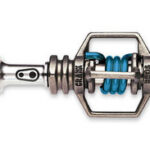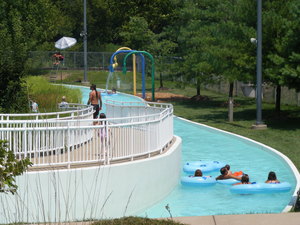Improving as a budding high-performance driver means putting in effort to learn the simple yet often overlooked techniques to make your car perform at its best. For cars with traditional manual transmissions, executing heel-and-toe downshifts while rev-matching will make your car quicker through the corners and smooth as butter. These driving techniques can be learned by anyone with a little practice, though they may never occurs to casual drivers.
Heel and Toe Shifting and Rev Matching: Purpose
Proper heel-and-toe downshifting allows you to brake, hold the clutch and apply pressure to the accelerator pedal at the same time. This becomes important in order to facilitate braking and downshifting simultaneously while rev-matching, allowing you to decelerate more quickly and maintain better balance when entering an upcoming corner. By combining the processes of downshifting and braking, you can often brake closer to the turn ahead while still entering at the proper speed.
When downshifting, either while heel-and-toe shifting or in other scenarios like preparing to pass on the freeway, “rev matching” means spinning the engine up to the ideal rpm for entering the new lower gear. A stab at the accelerator pedal while the gears are momentarily disengaged will allow the motor to spin up to a higher rpm very quickly. Then, when you engage the lower gear, you’ll be able to apply more power immediately, as well as put less strain on your engine and transmission. You’ll also avoid the nasty lurch that comes with rapid regular downshifts.
Heel and Toe Shifting and Rev Matching: Technique
The concept behind heel-and-toe shifting is not difficult to understand. Simply put, you must use the ball and toes of your right foot to apply the brakes, while simultaneously using your right heel to tap the accelerator pedal. You’ll also need to use your left foot on the clutch at the same time. In the real world, the technique is difficult to master. Some cars have pedals better placed for heel-and-toe shifting than others, and wearing bulky shoes makes things more difficult.
It’s a bit of a mind trick to sort out the processes of engaging and disengaging the clutch, braking and modulating the accelerator, each at the proper moment.
1. First, apply the brakes with the ball and toes of your right foot, and engage the clutch with your left foot. Often you’ll engage the clutch at the same moment, but this depends on the driving situation. The point is to be braking, with your foot down on the clutch so it is engaged.
2. Once the clutch is engaged and you are braking, use your right heel to tap the accelerator until the correct rpm for entering the lower gear is reached. This depends on the car; you’ll get a feel for it by finding the rpm that brings the smoothest transition into the lower gear.
3. Next, quickly let up on the clutch until it disengages while lifting your right foot off the accelerator. Do it right, and you’ll complete your downshift before the engine rpm drops. Once you’ve got it down, the lower gear will engage smoothly, and you won’t mix up your feet while trying to maintain braking pressure.
4. Practice away from traffic, and always concentrate on braking above all. If you are in a situation where you’ve slipped up the timing, make braking the highest priority. Causing the car to stall or grind a gear is not as dire as getting into an accident.
“Double-Clutching” Your Downshifts
A variation on the same technique involves shifting into neutral before you blip the accelerator to rev-match. Press the clutch pedal to engage the clutch, then shift the car into neutral. While the car is in neutral, tap the accelerator pedal so that the motor reaches the proper rpm for the lower gear. Then clutch again and shift into gear quickly, before engine speed has a chance to drop.
“Double-clutching” isn’t as quick as rev-matching while the clutch is engaged, but you’ll prevent extra wear and tear on your clutch that would otherwise come through free-revving the engine against the clutch. In more-casual driving, learn to master double-clutching for a smooth drive and longer clutch life.







